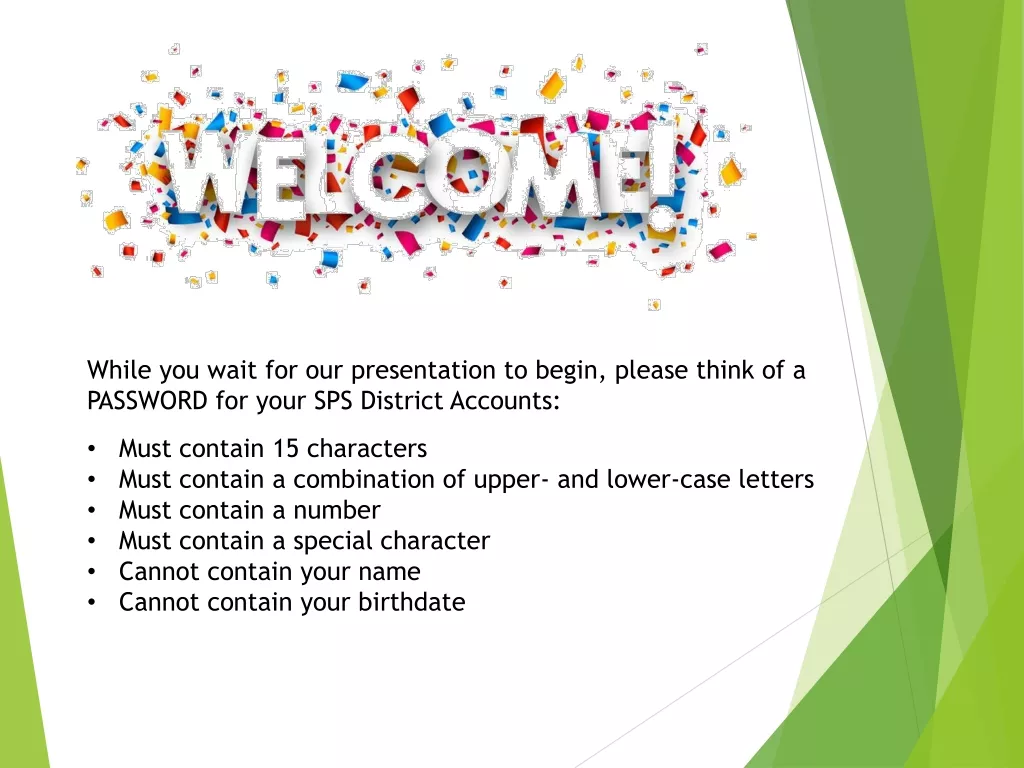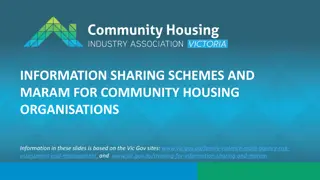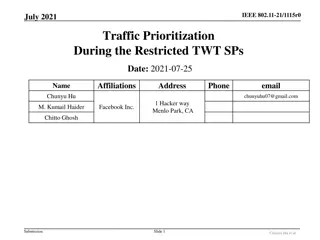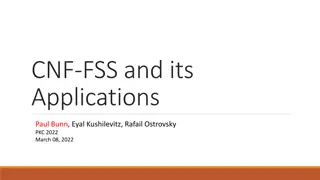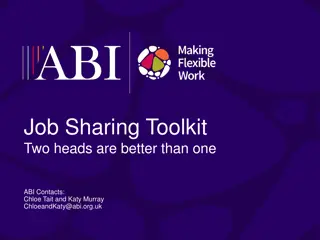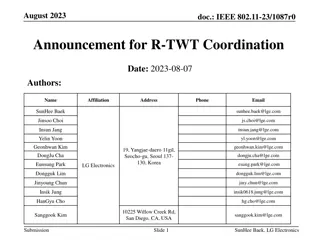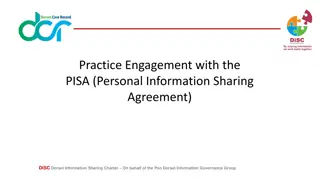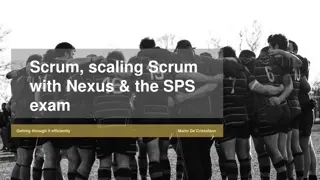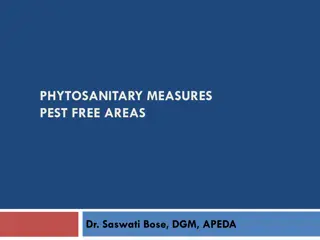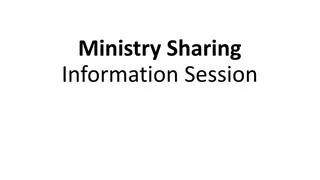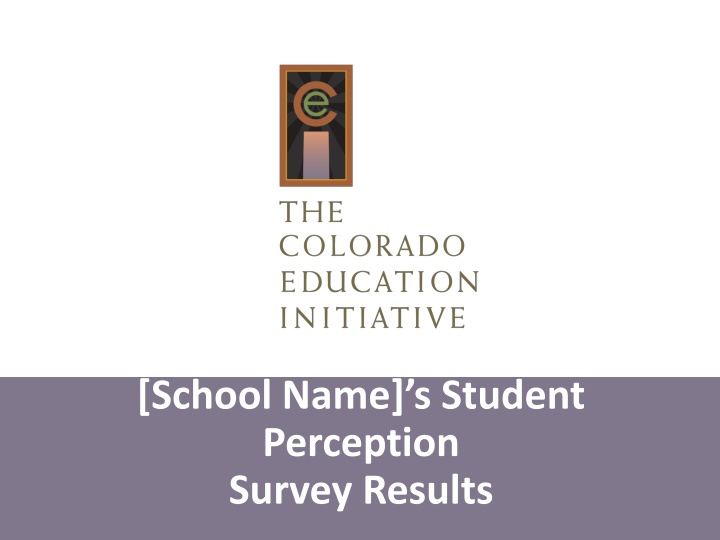
Impact of Student Perception Surveys on Teaching Practice
Explore the significance of student perception surveys in enhancing teaching practices, interpreting survey results, and driving school-level improvements. Discover the benefits and research behind student feedback and how surveys like Colorado's Student Perception Survey facilitate actionable insights for educators.
Download Presentation

Please find below an Image/Link to download the presentation.
The content on the website is provided AS IS for your information and personal use only. It may not be sold, licensed, or shared on other websites without obtaining consent from the author. If you encounter any issues during the download, it is possible that the publisher has removed the file from their server.
You are allowed to download the files provided on this website for personal or commercial use, subject to the condition that they are used lawfully. All files are the property of their respective owners.
The content on the website is provided AS IS for your information and personal use only. It may not be sold, licensed, or shared on other websites without obtaining consent from the author.
E N D
Presentation Transcript
[School Name]s Student Perception Survey Results
Do now Students can contribute meaningful feedback about my teaching practice. Write your reactions to this statement.
Objectives Review survey purpose and content Understand how to interpret results Review school-level trends Discuss next steps for using results
Agenda Purpose and overview of the survey Interpreting results [School name] s results Next steps
Why use a student survey? Integrate student voice and experience into teacher practice and school culture. Provide actionable feedbackfrom the stakeholders who experience instruction the most. Contribute to a big-picture view of what is happening in classrooms as well as school- and district-wide trends.
The research behind student surveys The combination of student surveys, observation, and student growth data are able to predict future effectiveness better than any of them alone. THE MET PROJECT Student survey results are correlated to student achievement gains. OTHER RESEARC H Student ratings of teachers are consistent over time and are able to meaningfully distinguish teachers. The use of student feedback promotes both reflection and responsibility on the part of the students.
Colorados Student Perception Survey Free and publically available 34-item survey about student learning experiences, mapped to the Colorado Teacher Quality Standards Two versions of the survey one for grades 3-5 and another for grades 6-12 Developed by CEI with feedback from Colorado teachers and students
Research on Colorados SPS Student ratings are correlated with Principal ratings Student growth Student achievement Teachers are using results to change practice I used my Student Perception Survey results to: Agree Identify areas for growth Reflect on my teaching in a way I haven't before Change my practice Complete my self-assessment Have a meaningful conversation with my evaluator or coach 77% 72% 66% 63% 49%
What does the survey measure? How teachers use content and pedagogical knowledge to help students learn, understand, and improve. STUDENT LEARNING STUDENT-CENTERED ENVIRONMENT How teachers create an environment that responds to individual students backgrounds, strengths, and interests. CLASSROOM COMMUNITY CLASSROOM MANAGEMENT How teachers cultivate a classroom learning community where student differences are valued. How teachers foster a respectful and predictable learning environment.
What does the survey measure? 1. Read through the survey questions for each category. 2. Write down up to five words for each category that describe the overall content. Share your words with the group and come to a common set of up to five words for each category Discuss
How does the survey content align to Teacher Quality Standards? Teachers demonstrate mastery of and pedagogical expertise in the content they teach. 1. Which standard(s) align to each survey category? Teachers establish a safe, inclusive and respectful learning environment for a diverse population of students. 2. Teachers plan and deliver effective instruction and create an environment that facilitates learning for their students. 3.
What does the survey measure? Student Learning How teachers use content and pedagogical knowledge to help students learn, understand, and improve. Standards I and III Student-Centered Environment How teachers create an environment that responds to individual students backgrounds, strengths, and interests. Standard II Classroom Management How teachers foster a respectful and predictable learning environment. Classroom Community How teachers cultivate a classroom learning community where student differences are valued. Standard II Standard II
Digging deeper Online Tool Onlin e Tool Take ten minutes to read and annotate the Digging Deeper document Star professional practices where you would like more information about your practice Underline professional practices where you think students are uniquely positioned to provide additional information
Digging deeper 1. Pick one element that you would like to discuss with your group 2. Going around the table, each person shares one element and how it is annotated Why did you pick this element? How do your stars and underlined areas align? Does this change your thinking about how to use student feedback to get more information about your practice? Discuss
STUDENT SURVEY RESULTS AND REPORTS
Interpreting student survey results Identify strengths and areas of need Dig deeper into the data Start with predictions Reflect
Start with predictions Identify strengths and areas of need Dig deeper into the data Start with predictions Reflect
Start with predictions How do teachers perceive their own practice as measured by the Student Perception Survey? What are their strengths? Where do the think they need to improve? Online Tool Onlin e Tool Teachers can complete the teacher self assessment (for grades 3-5 and 6-12) prior to reviewing their results
Prioritize focus areas Identify strengths and areas of need Dig deeper into the data Start with predictions Reflect
Guiding principles for digging into the data Always consider comparison groups Questions should be compared against the school, district, or content are comparison groups. Two questions may have the same percent favorable score but one could have many more never responses than most of the time. Look at the distribution of responses Responses to some questions may look very different for different groups of students (e.g., boys vs. girls, different periods or grade levels, etc.). Disaggregate to understand subgroups
Identify strengths Are higher than the comparison groups Are better than predictions Have a lot of always responses Have consistent responses across subgroups LOOK FOR ITEMS THAT
Identify areas of need Are lower than the comparison groups Don t live up to predictions Have a lot of never responses Look very different for student subgroups LOOK FOR ITEMS THAT
Incorporate context Identify strengths and areas of need Dig deeper into the data Start with predictions Reflect
Student survey results dont stand alone Programs and initiatives Student growth data SPS results Professional practices Curriculum
[SCHOOL NAME]S SPS RESULTS
Overview of results Take 5 minutes to reflect on the results on your own. Consider the following: What are your initial thoughts about these results? Does anything confuse you? Does anything surprise you? What are your initial thoughts? Discuss
Identify strengths What are our strengths as a school? LOOK FOR ITEMS THAT Are higher than the comparison groups Are better than predictions Have a lot of always responses Have responses that are consistent across subgroups
Identify areas of need What are our areas of need as a school? Are lower than the comparison groups Don t live up to predictions Have a lot of never responses Look very different for student subgroups LOOK FOR ITEMS THAT
Areas of need Do these align with our predictions? What do we notice when we dig into the data? What context do we need to take into account? What does it look like to do this well in classrooms? Discuss
Next steps Teachers will receive student survey results on [date] Review your results [insert any other specific notes here] REFLECT [Insert instructions here about having a conversation with an evaluator, coach, and/or peer] DISCUSS TAKE ACTION [Insert specific instructions here about incorporating results in PGPs, progress monitoring, observations, goal setting, etc.]


